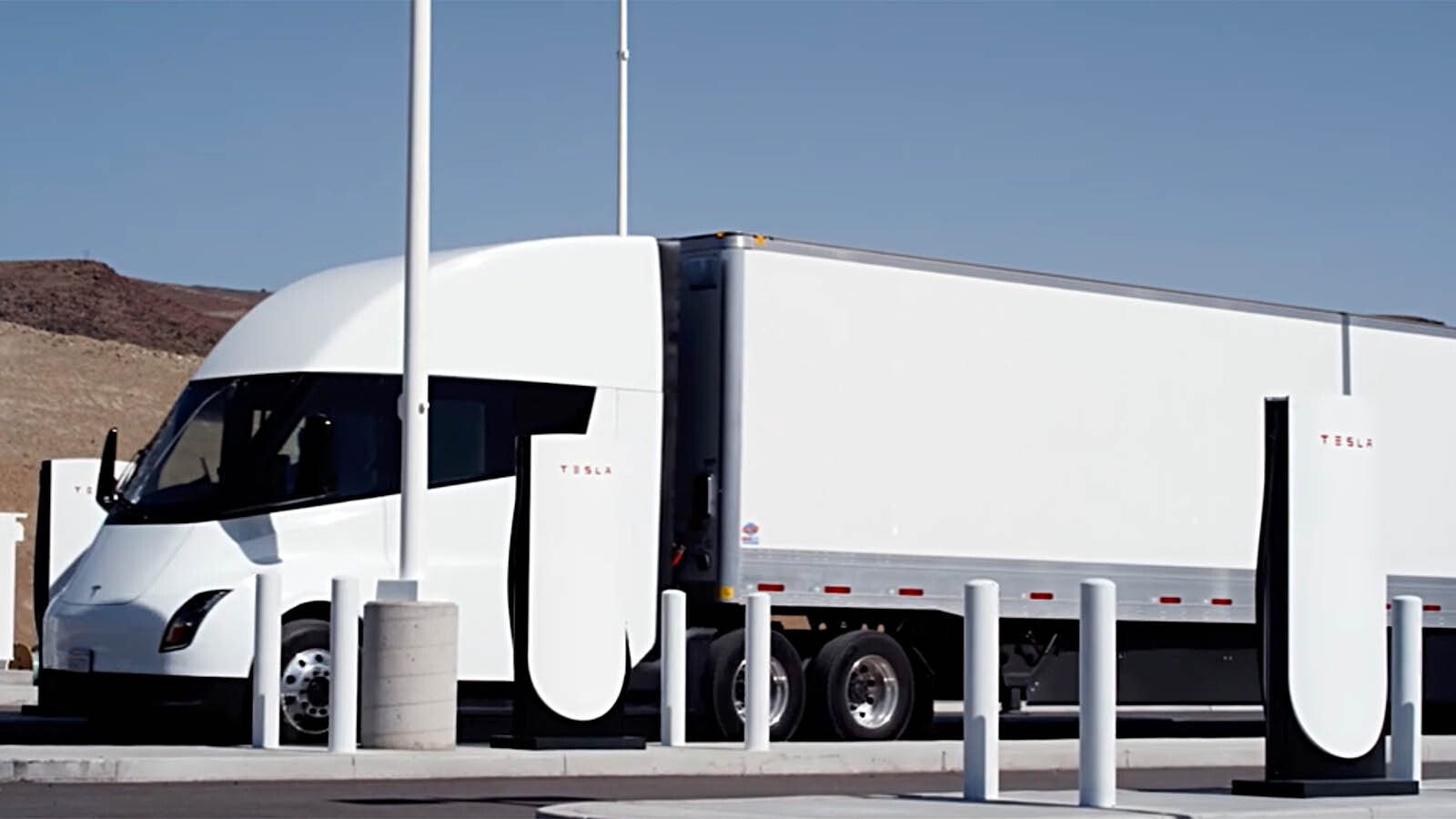The first Tesla Semi all-electric Class 8 truck was delivered to PepsiCo this week. The truck will haul cargo between the Frito-Lay plant in Modesto, California, and the beverage factory in Sacramento, roughly 160 miles round-trip.
The electric trucks require special Megacharger stations to charge, and there are very few anywhere in the country. It takes 30 minutes, according to Tesla, to charge the truck up to 80%, which will give the vehicle a range of 400 miles. The company hasn’t said how long it takes to go to full charge, but in standard Tesla cars, the last 20% of charge can take hours.
Utility Dive estimates that, based on Tesla’s specs for the semi, if the United States converted all long-haul trucks to electric, the U.S. would need to produce 504 terawatts of power — more than 10 times more power than the state of Wyoming produces annually.
Truckers Say No
Despite these challenges, California is charging ahead with plans to ban all fossil fueled medium- and heavy-duty trucks by 2040.
While California laws may seem a world away from Wyoming, other states often follow California’s lead. Should it go through with a ban on diesel trucks, Washington, New York and possibly Colorado could soon follow.
The trucking industry already struggles to find enough qualified truckers to fill its routes. If the reaction to electric semi specs from truckers Cowboy State Daily talked to is any indication, a ban on diesel trucks is likely to make the problem worse.
“Don’t want it. Don’t need it. No way,” said Buddy Holley of Missouri about electric semis.
He drives 550 to 600 miles a day and said that if he had to stop every 400 miles to charge for a half hour, his days would get considerably longer.
Holley said the laws in California regarding what roads trucks are allowed to drive on are so difficult, he avoids driving there at all.
Roy Smith, a long-haul trucker from Baltimore, said it takes him five minutes to refuel now. He’s not keen on the idea of an extra 25 minutes per stop, as well as much more frequent stops.
“I sometimes do friggin’ 800 miles in a day. Having to charge every 400, that’s just not efficient. No, that’s not good at all,” Smith said.
‘Ain’t Gonna Work’
Long-haul trucker Wayne Richmond of Meaford, Ontario, Canada, said the charging requirements for the Tesla Semi make it impractical for his own work.
“I’m a Canadian driver, and my routes are 1,200 to 1,800 miles. Electric ain’t gonna work,” he said.
The Canadian said that in Ontario, there are charging stations all along the highway that have sprung up in the past several years.
“It blew me away,” Richmond said.
In the United States, charging stations are a lot more scarce, especially in Wyoming. Assuming the Tesla Megachargers are as slow to appear across America’s highways, a sufficient network could be decades away.
“I can’t see my boss going that way,” Richmond said about replacing diesel semis with electric.
Ernie Navarrete, a trucker from El Paso, Texas, said he can refuel in about seven minutes. He’d have to charge twice a day in a Tesla Semi, which would add at least 46 minutes to his day.
“I’m not a fan of them. Maybe in the future,” Navarrete said.
Not All Bad
Tesla unveiled the truck five years ago. During a presentation, Tesla CEO Elon Musk showed side-by-side comparisons of the performance of a Tesla Semi to that of a diesel-powered truck.
With no load, the Tesla goes 0 to 60 mph in five seconds. A comparable diesel truck would take 10 seconds longer.
With an 80,000-pound load — the maximum a truck can legally carry on America’s highways — the Tesla Semi accelerates to 60 mph in 20 seconds.
“That thing on the left that looks like it’s not moving is the diesel truck,” Musk said during the presentation.
The Tesla can go up a 5% grade at 65 mph, whereas a diesel truck only does 45 mph, according to Musk.
The truck also has one gear, meaning the driver isn’t constantly shifting gears. The driver’s seat is situated at the center of the cab, meaning the driver has a full view of everything around the truck.
It’s also equipped with dual touchscreens running Tesla’s software, which means the truck largely drives itself with minimal inputs from the driver.
Musk also claimed the truck is designed to make jackknifing impossible. Jackknifing is a dangerous situation where the trailer swings out to one side as the truck slows down, something drivers are careful to avoid.
“Your worst nightmare with this truck is gone,” Musk declared.
Solar To The Moon
Musk claimed that a Tesla truck will cost $1.26 per mile, compared to $1.51 per mile for diesel, but he also claimed that the Megachargers will be entirely powered by solar energy.
That would require 1.4 million acres of solar panels to meet the 504 terawatts of power needed, and that’s on top of an astronomical amount of batteries.





